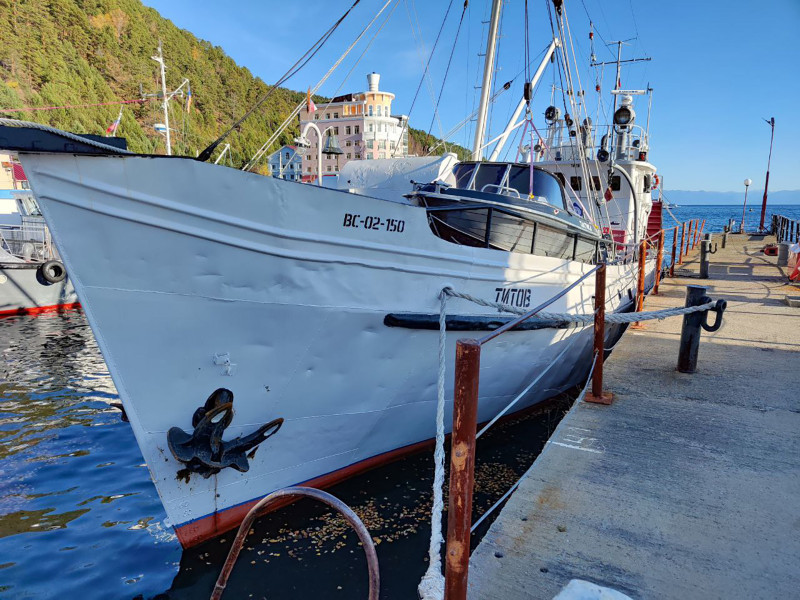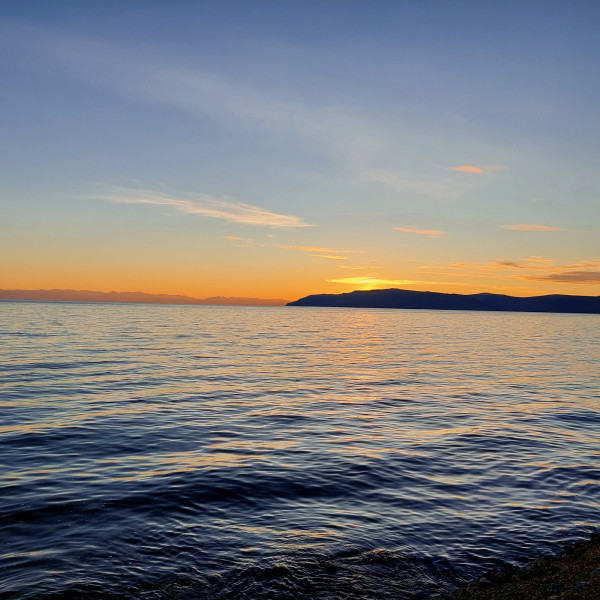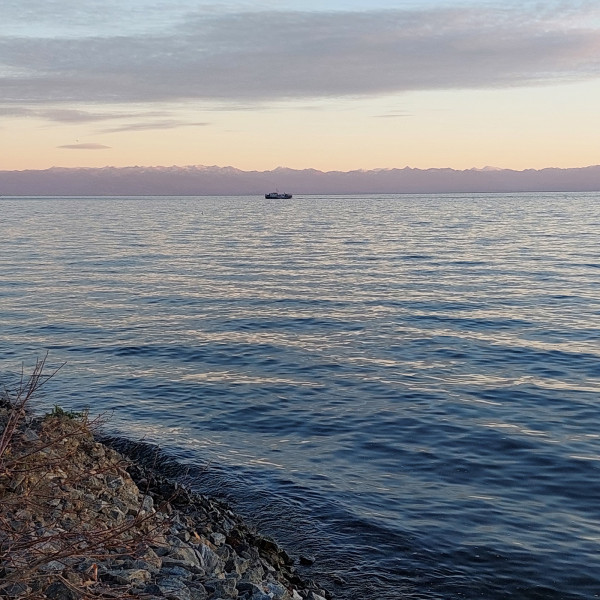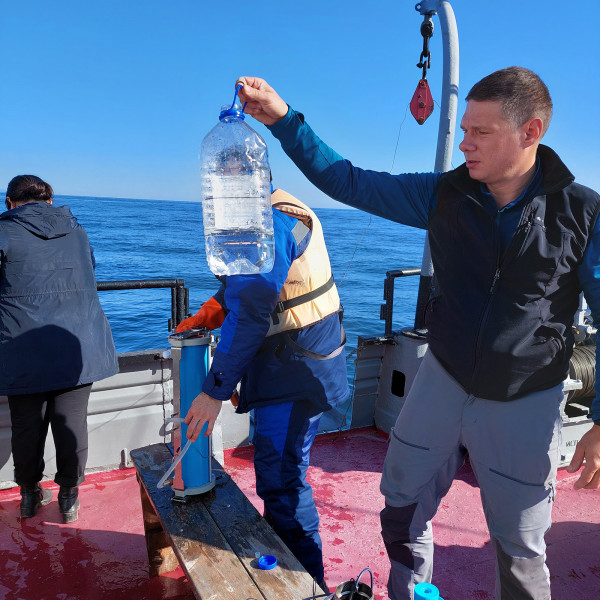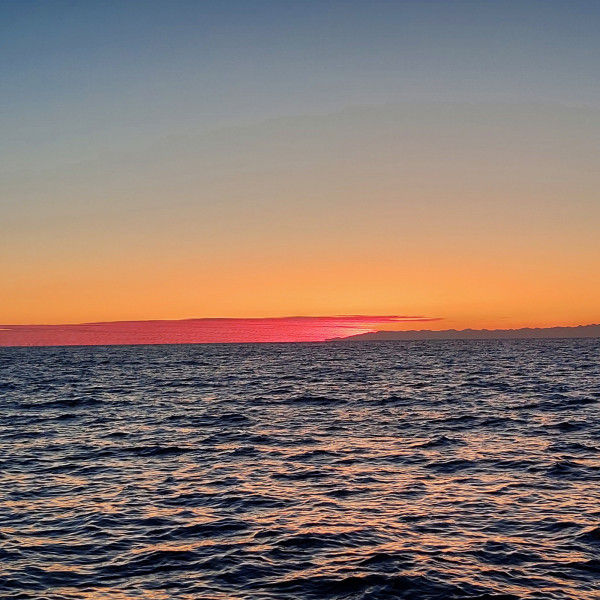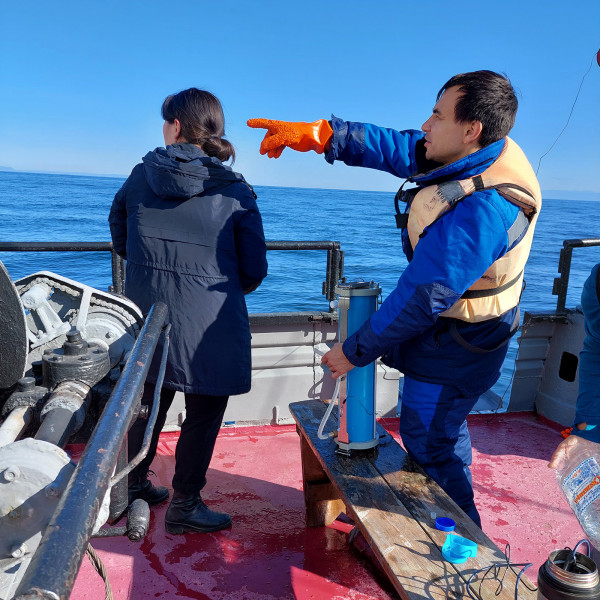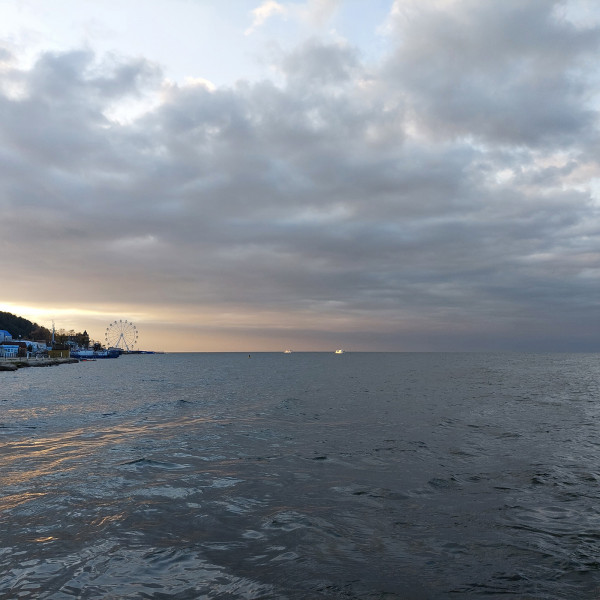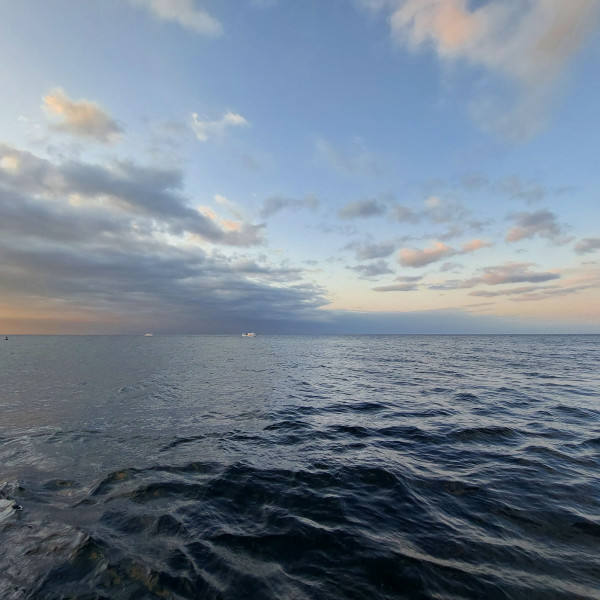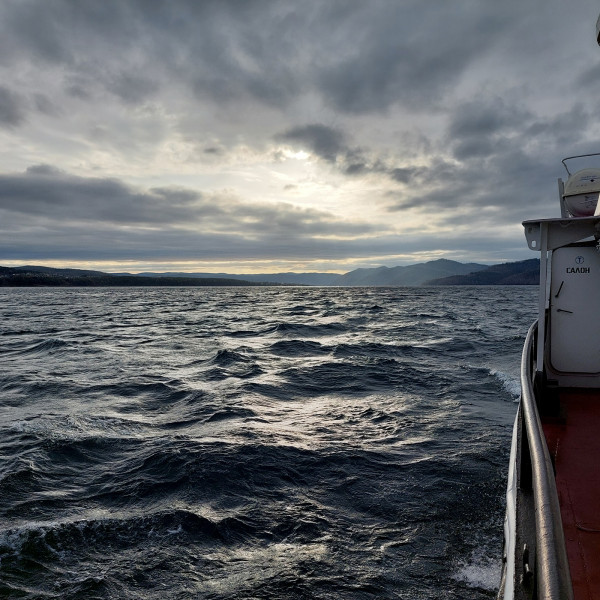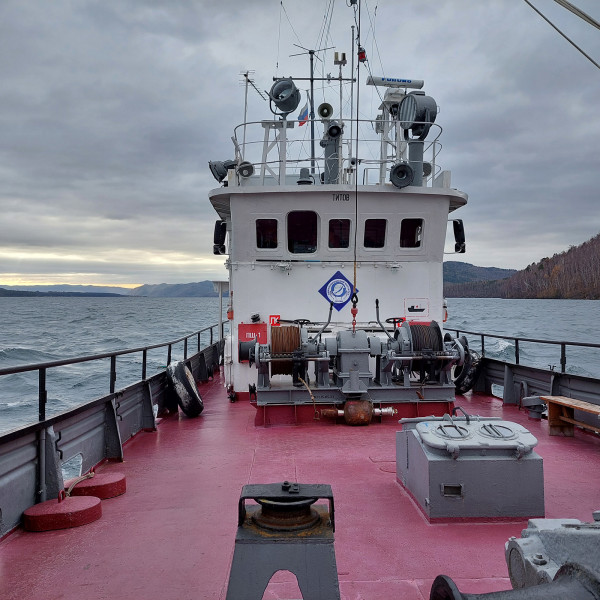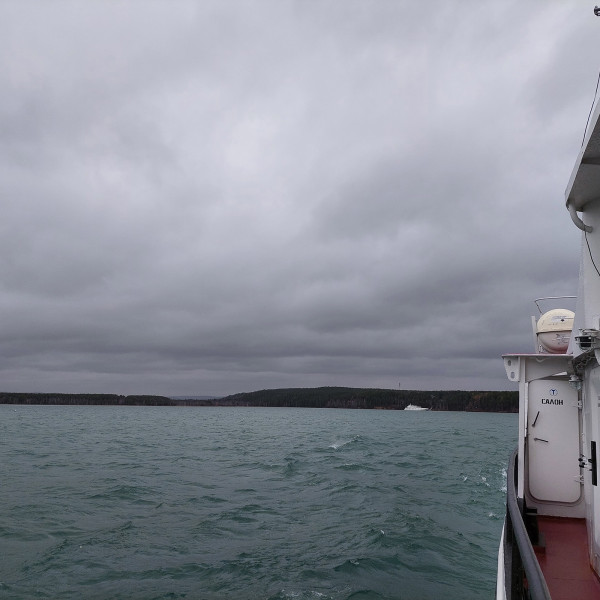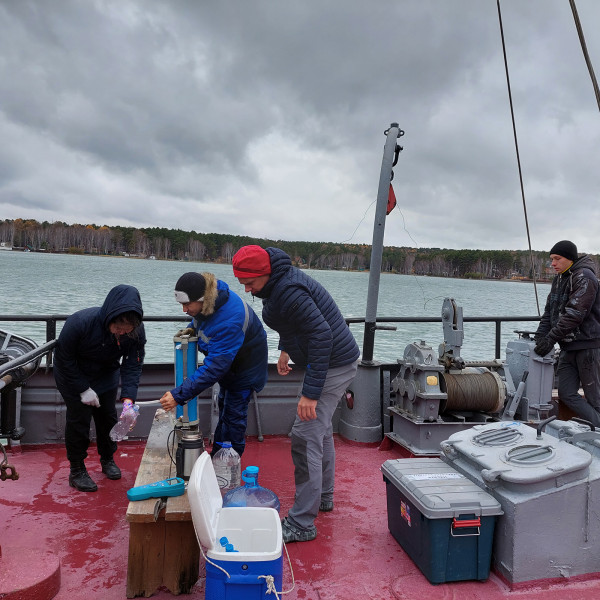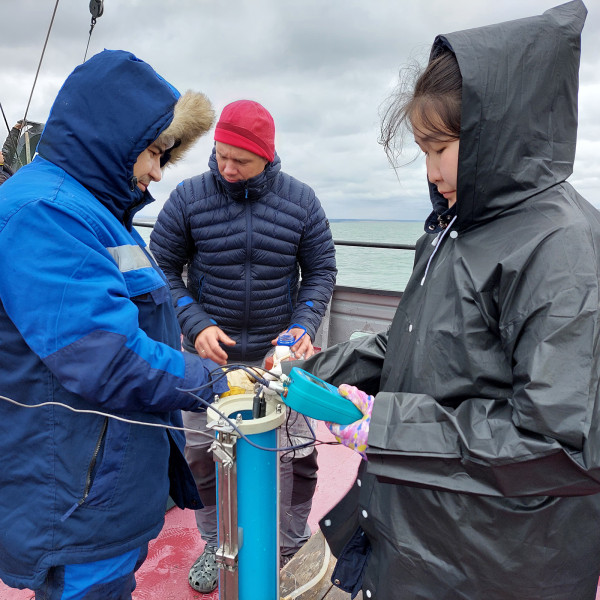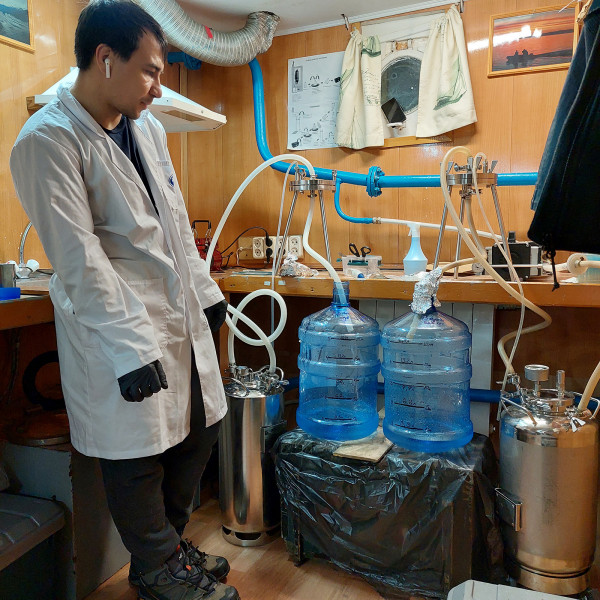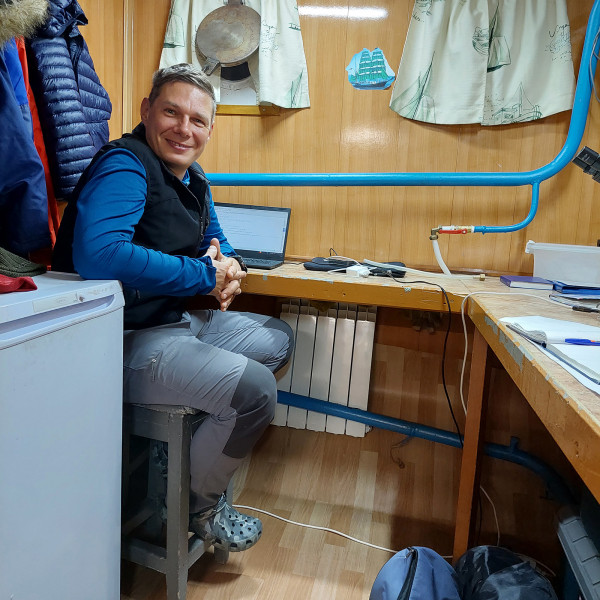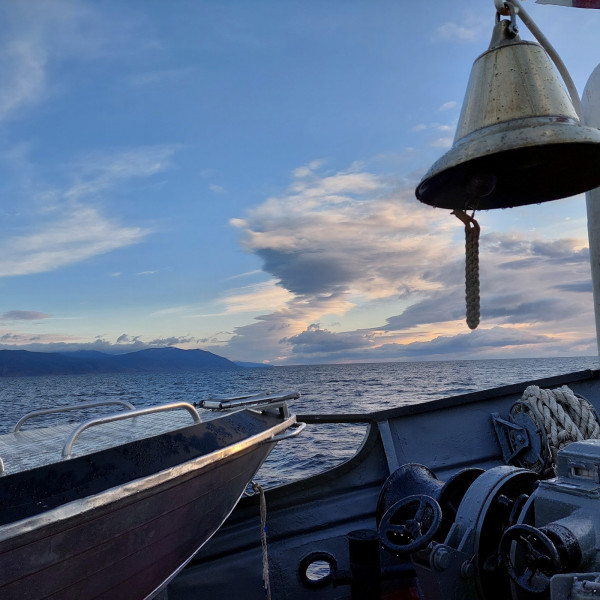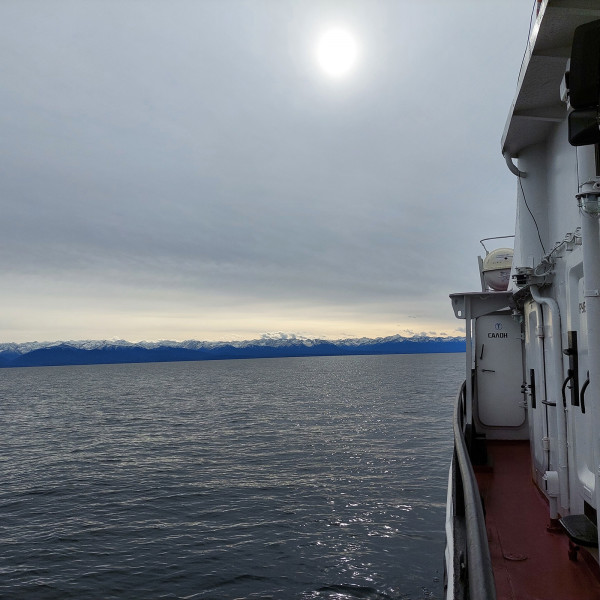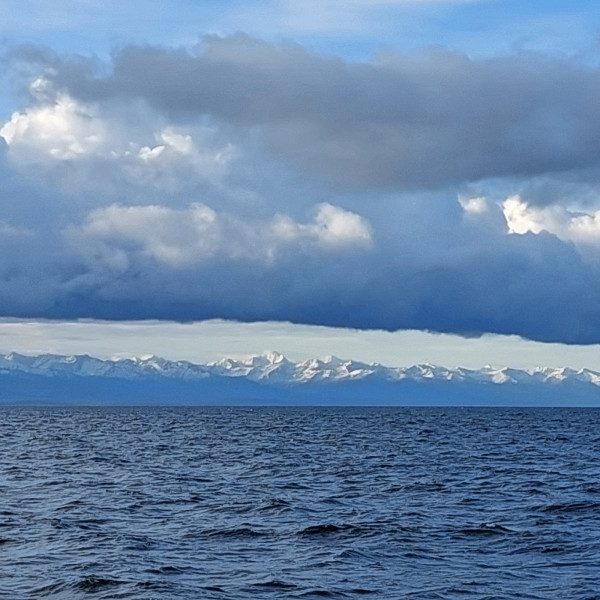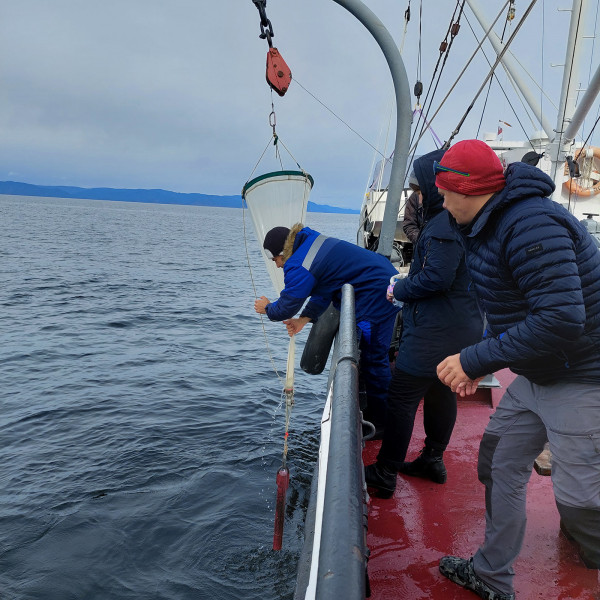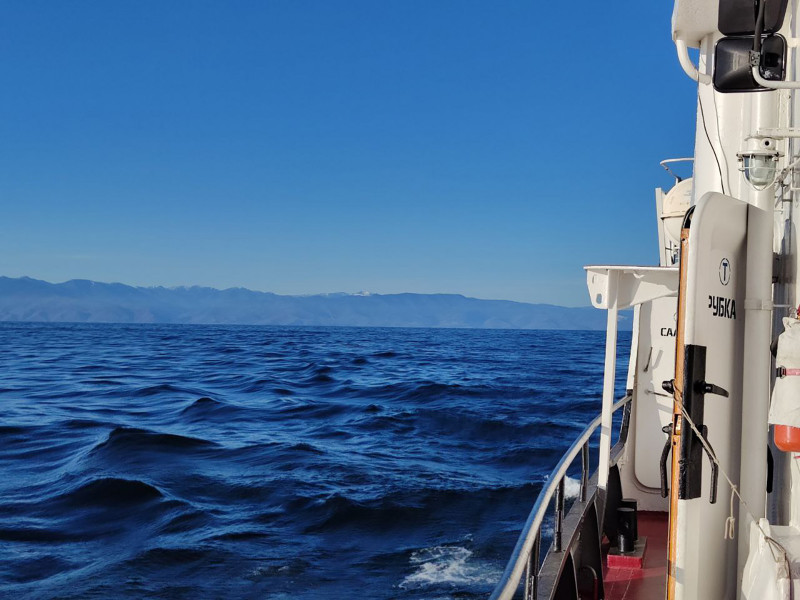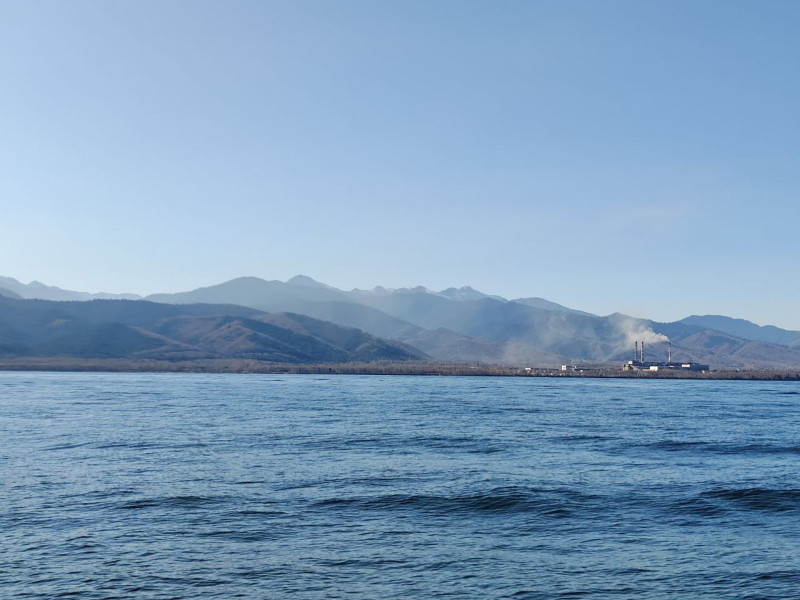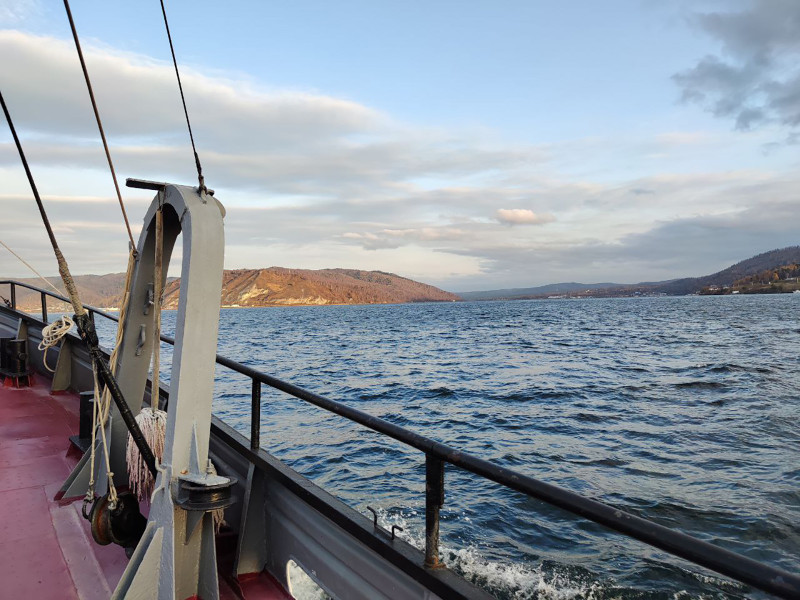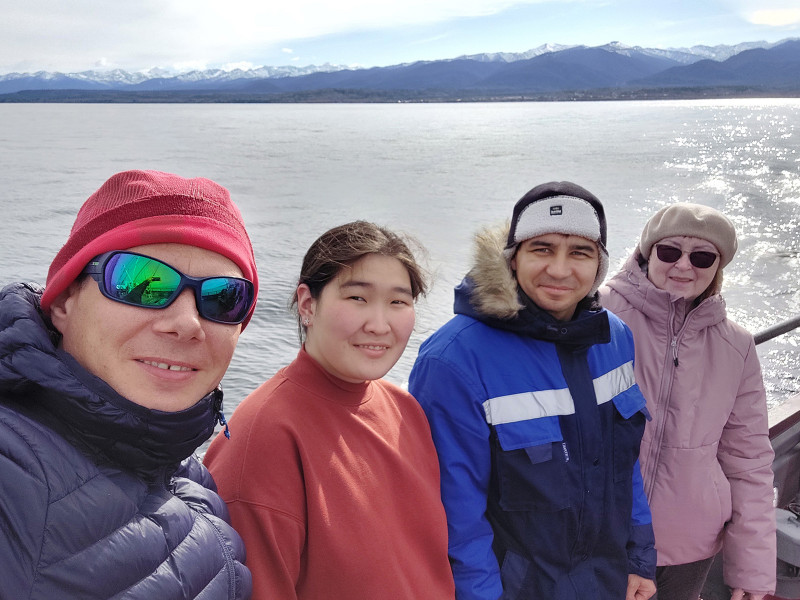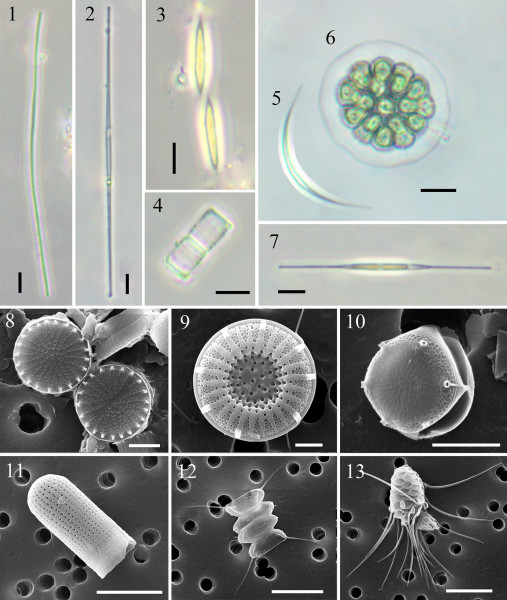Expedition on board the R/V “Titov” on October 15-18, 2023
As part of the RNF project “Microeukaryote communities in the reservoirs of the Angara cascade” (23-14-00028) (led by E.V. Likhoshway), a research expedition was carried out on board the R/V “Titov” from 15 to 18 October 2023 to compare the diversity of microeukaryotes in South Baikal (SB) and Irkutsk Reservoir (IR) during autumn. Water samples were collected from the photic layer (up to 25 m in SB and up to 5 or 10 m in IR) using a Niskin bathometer at 9 stations in SB (12 km from Kultuk, 3 km from Maritui, Maritui-Solzan, 3 km from Solzan, Tolsty-Snezhnaya, 3 km from Tankhoy, Kadilny-Mishikha, Listvyanka-Tankhoy, 3 km from Listvyanka) and at 8 stations of IR including bays (Kurma, Elovy, Ershovsky). Water transparency was determined with a Secchi disk. After determining the temperature, pH and redox potential (ROP) of water, samples were collected on filters for further examination by scanning electron microscopy (SEM), quantification analysis of phytoplankton composition by light microscopy (LM) and DNA isolation for sequencing to determine the taxonomic composition of microeukaryotes and with a Juday net for culturing microalgae species.
During the expedition, surface water temperatures were found to be 5.7-12.3 °C in October in SB and 8.2-10.5 °C in IR (10.1-18.4 °C and 14.9-20.0 °C in August, and 3.6-5.0 °C and 6.0-12.7 °C in June, respectively).
The pH values in October ranged similarly and widely in SB and were 7.26-8.39 and in IR 7.18-8.27, in contrast to August (8.09-8.44 in SB, 7.96-8.28 in IR), and June, when water in IR was more alkaline (8.0 to 8.7) than in SB (7.0-8.0).
Water transparency by a Secchi disc ranged from 5.5 to 9.5 m in SB in October and from 1.5 to 7.0 m in IR, which was comparable to previous seasons: 4.5–9.0 m in SB in August and 10–22 m in June; 3-5 m in IR in June; and 2.5–4.5 m in IR in August.
Water conductivity ranged from 83.7-95.4 µS/cm in SB in October and 90.8-96.7 µS/cm in IR.
Phytoplankton, as in the summer period, was represented by 6 divisions: Cyanophyta, Cryptophyta, Dinophyta, Chrysophyta, Bacillariophyta and Chlorophyta. According to preliminary qualitative data, the phytoplankton community of SB was not rich. The most common plankton species in October were green species, such as: Ankistrodesmus arcuatus Korshikov, Mucidosphaerium pulchellum (H.C.Wood) C.Bock, Proschold & Krienitz and species of the genus Sphaerocystis. Blue-green algae were rare compared to summer and were mainly represented by the small-celled Cyanodictyon planctonicum B.A. Mayer B.A. Mayer and species of the genus Microcystis. Diatoms were not abundant and consisted mainly of summer-autumn species Asterionella Formosa Hassall, Aulacoseira granulata var. angustissima (O.Müller) Simonsen, Cyclostephanos dubius (Hustedt) Round. Stephanodiscus minutulus(Kützing) Cleve & Möller Lindavia minuta (Skvortzov) T. Nakov et al., in small quantities were Nitzschi а graciliformis Langre-Bertalot, Sinonsen et al. и Ulnaria acus (Kützing) Aboal. Of the yellow-green algae, Dinobryon divergens O.E. Imhof was found more often than other species of this division.
In IR, as in the summer period, the planktonic microalgal community was generally similar in species composition to that of Lake Baikal, but slightly more diverse. According to the electron microscopy data, a large number of small centric diatoms were observed, the most common of which were Stephanodiscus minutulus and Cyclostephanos makarovae (S.I. Genkal) K. Schultz, less often were Cyclostephanos dubius (Hustedt) Round and Thalassiosira pseudonana Hasle & Heimdal, there were also found Asterionella formosa, Aulacoseira granulata var. angustissima and small quantity of Nitzschia graciliformis Lange-Bertalot & Simonsen and Urosolenia eriensis (H.L. Smith) Round &R.M. Crawford. Among blue-green algae, as well as in SB, Microcystis sp. were most frequently. Yellow-green algae were represented by the species of the genus Dinobryon, among them the most abundant were Dinobryon divergens and Dinobryon bavaricum Imhof, and green algae Ankistrodesmus arcuatus Korshikov и Mucidosphaerium pulchellum (H.C. Wood) C. Bock, Proschold & Krienitz. Cryptophytae were very few in number, the principal of which was Rhodomonas pusilla (Bachmann) Javornick.
The phytoplankton of the bays was generally similar to the microalgae community of the central part of the reservoir, but was more abundant and with more benthic species at shallow depths.
It should be mentioned that, similar to prior seasons, South Baikal`s phytoplankton was less abundant and had a different species composition than that found in Irkutsk Reservoir and its bays. The lower indications are typical of Lake Baikal's autumn season. The data are preliminary and samples are being further studied. Samples will be analyzed by SM and SEM, DNA will be extracted, high-throughput sequencing and bioinformatic analysis of the sequences obtained will be carried out to determine the taxonomic diversity of microeukaryotes.
Participants of the RNF project (E.V. Lykhoshway, A.M. Marchenkov, Y.P. Galachyants, D.V. Khilkhanova) took part in the expedition, microscopic analysis was performed by A.D. Firsova.
The expedition participants thank the crew of the R/V “Titov” for the precise and well-coordinated work.




